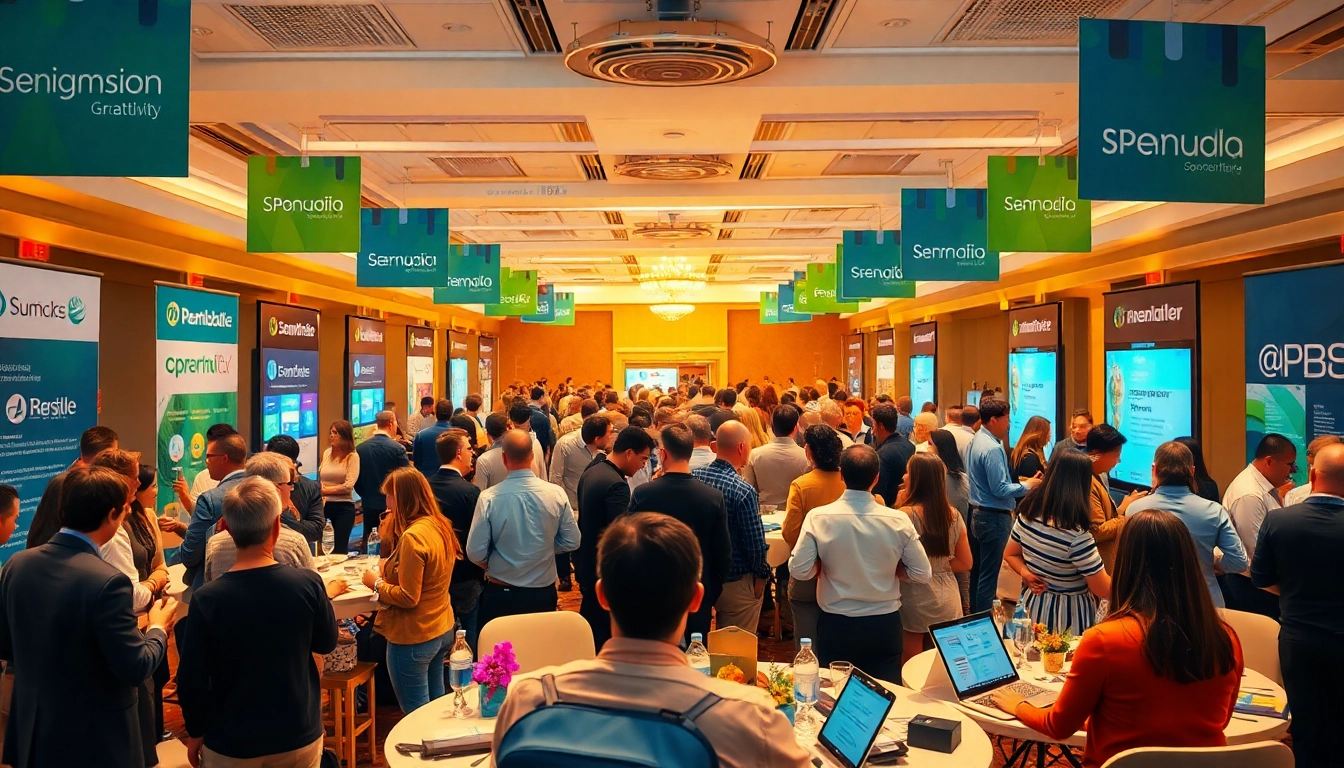Understanding Sponsorship Opportunities
What Are Sponsorship Opportunities?
Sponsorship opportunities are formal arrangements where a business or organization provides financial support or resources to an individual, group, or event in exchange for promotional benefits. These arrangements can be mutually beneficial, allowing the sponsor to enhance brand visibility while the recipient undergoes funding to achieve their goals. Such partnerships can encompass a wide range of events, from sporting activities to cultural festivals, and from individual creators to large nonprofits. Essentially, sponsorship is a strategic marketing solution that creates a win-win scenario for both parties involved.
The Importance of Sponsorship in Business Growth
In today’s competitive landscape, successful businesses are increasingly recognizing the value of sponsorship. Engaging in sponsorship opportunities can significantly enhance brand recognition, customer loyalty, and market positioning. By associating a brand with respected events or initiatives, companies can align themselves with specific values and target demographics, enhancing their market reach. Moreover, sponsorship provides unique avenues for audience engagement—helping businesses to connect meaningfully with potential clients.
Types of Sponsorship Opportunities Available
Sponsorships can take various forms, each designed to target different strategic goals. Here are some common types:
- Event Sponsorship: Companies sponsor events such as marathons, fairs, and concerts to boost brand visibility among attendees.
- Team Sponsorship: Businesses fund sports teams in exchange for logo placement on uniforms and promotional materials.
- Cause Sponsorship: Brands align with social or environmental causes to enhance corporate social responsibility and reach like-minded consumers.
- Content Sponsorship: This involves sponsoring digital content creation, such as podcasts, blogs, or videos, to reach target audiences directly.
- Nonprofit Sponsorship: Companies support nonprofit agencies or initiatives to fulfill community engagement objectives while enhancing brand image.
Identifying Potential Sponsors
Researching Companies Seeking Sponsorships
The first step in identifying potential sponsors is thorough research. A deep understanding of various businesses actively seeking sponsorship opportunities can significantly enhance your chances of success. Start by investigating industries aligned with your audience or event. Utilize directories, social media, and sponsorship-specific platforms to compile a list of companies that have a history of sponsorship.
Building a Targeted List of Sponsorship Opportunities
Once you have identified companies that match your criteria, it’s essential to create a targeted list. Prioritize potential sponsors based on factors such as industry relevance, brand synergies, and past sponsorship history. Assess the company’s marketing objectives and how your project aligns with them. This focused approach will streamline your outreach efforts and increase the likelihood of fruitful partnerships.
Networking Strategies for Successful Partnerships
Networking is key to cultivating relationships with potential sponsors. Attend industry events, webinars, and networking sessions to connect with decision-makers. Leverage social media platforms like LinkedIn to engage with organizations and demonstrate your expertise. Establish meaningful connections that can lead directly to sponsorship discussions. Remember, the aim is to build long-term relationships rather than seeking one-off sponsorships.
Creating Effective Sponsorship Proposals
Key Components of a Winning Proposal
Creating a successful sponsorship proposal requires careful consideration of several elements. An effective proposal typically includes:
- Executive Summary: A brief overview outlining the sponsorship opportunity, your objectives, and what you seek from the sponsor.
- Description of Your Audience: Detailed demographics and psychographics of your audience to demonstrate market reach.
- Benefits to the Sponsor: Clearly articulate the advantages the sponsor would gain from the partnership—like visibility, customer engagement, or community goodwill.
- Activation Ideas: Suggestions on how the sponsor can engage with the audience during the event or initiative.
- Financials: A clear budget for the sponsorship amount and what it will cover.
How to Showcase Value to Sponsors
When presenting your proposal, it is crucial to demonstrate the potential return on investment (ROI) for the sponsor. Utilize data and case studies to highlight past sponsorship successes. Moreover, outline how the collaboration can lead to various metrics such as increased brand awareness, customer engagement, and enhanced public perception. Tailoring your message to the potential sponsor’s specific goals is vital in making the proposal compelling.
Examples of Successful Sponsorship Proposals
Studying successful sponsorship proposals can provide insightful guidelines for crafting your own. For instance, consider companies that partnered with sports events, where sponsors included Free Dinners or discounted merchandise and executed creative advertising around participant engagement. Look for case studies where brands have effectively utilized public relations channels to amplify their sponsorship roles and outcomes. Reference resources like sponsorship opportunities for examples of successful partnerships.
Leveraging Sponsorships for Brand Awareness
Brand Visibility Through Sponsorships
Once the sponsorship deal is sealed, the next step is to ensure that both parties maximize visibility throughout the collaboration. Utilize various media channels—social media, newsletters, press releases—to highlight the sponsorship event. Make sure to include the sponsor’s logo prominently in promotional materials. Engaging storytelling about the partnership can create emotional resonance, increasing audience interest.
Engagement Strategies for Maximizing Impact
To maximize impact from sponsorships, utilize multifaceted engagement strategies. These may include interactive experiences, contests, and live demonstrations during events. Social media campaigns encouraging audiences to share content or testimonials can amplify the brand’s presence. Strategic hashtag use can also foster a sense of community around the sponsorship and extend its reach beyond the event.
Measuring Success: KPIs for Sponsorship Opportunities
Establishing key performance indicators (KPIs) will allow you to measure the success of your sponsorship effectively. Common KPIs include:
- Brand impressions, measuring the number of times the brand is displayed.
- Engagement rates on social media during sponsorship activities.
- Lead generation outcomes from the sponsorship.
- Audience sentiment analysis from post-event surveys.
- Sales conversion rates resulting from sponsorship-driven campaigns.
Long-Term Sponsorship Relationship Management
Maintaining Communication with Sponsors
Once established, sponsors should not be viewed as one-time collaborators. Maintaining open communication is essential for fostering a long-term relationship. Regular updates about event performance, audience engagement, and feedback can enhance trust and transparency. Consider hosting debrief meetings post-event to evaluate the success and discuss future opportunities collaboratively.
Renewing Sponsorship Agreements: Best Practices
When it comes time to renew a sponsorship agreement, it’s vital to demonstrate the success of the previous partnership. Prepare a comprehensive recap, showcasing KPIs, audience feedback, and successful activation details. Outline new opportunities or enhancements to the collaboration that can provide additional value to the sponsor. Ensure the renewal negotiation addresses any changes in market dynamics or business strategies for both parties.
Case Studies: Successful Sponsorship Relationships
To understand the nuances of fostering successful sponsorship relationships, examining case studies is paramount. For example, consider the success of Coca-Cola’s sponsorship with the FIFA World Cup, showcasing brand visibility on a global scale. Analyzing the strategies used by both Coca-Cola and FIFA highlights the importance of aligning marketing goals with event values. These case studies serve as practical insights for nurturing and managing sponsorships effectively.



